Bananas are beautiful exotic plants with lush green foliage that are fast-growing and can give a tropical look and feel to any garden or home. If you are a fan of exotic tropical plants like us and want to grow banana trees but don’t have enough space or live in a cold climate, you can opt to grow them in pots. It is actually very easy, and yes – bananas grown in pots can bear fruits!
Many banana varieties grow well in pots and can also withstand temperature drops. We will help you choose the right variety for you and show you how to take care of it easily, so it grows into a healthy and strong plant.
All you need to do is carefully read these 10 tips on growing banana trees in pots, and you will instantly become an expert!
1. Choosing The Right Variety
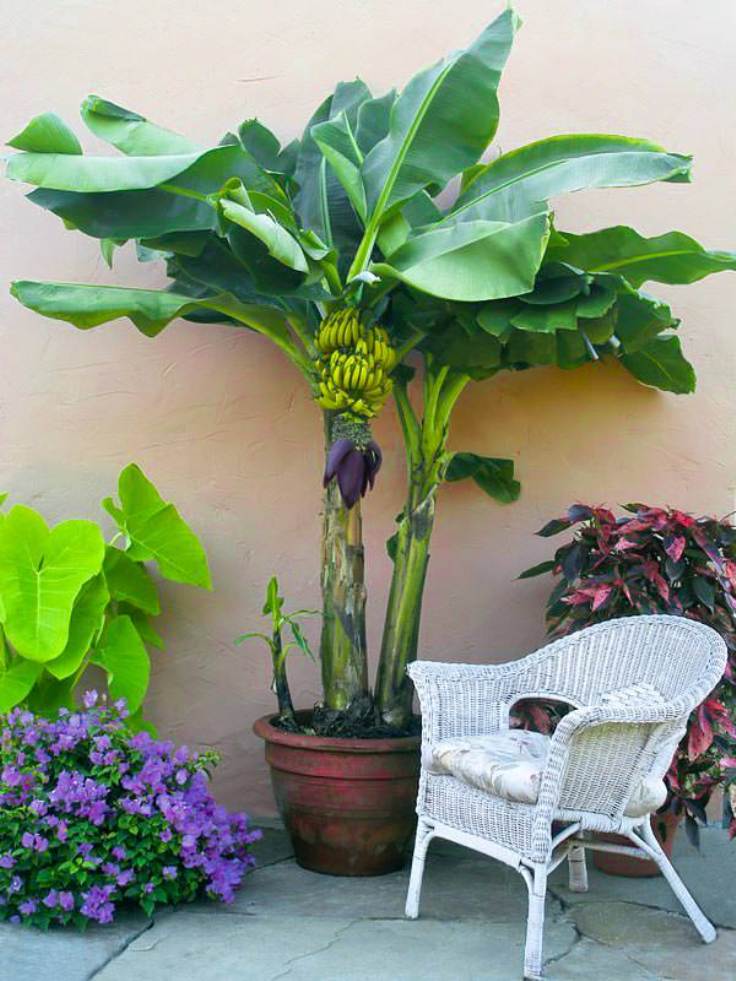
If you chose to grow bananas in a pot, you would probably need a dwarf variety, especially if you need to take it indoors before the first frost. What is unique about dwarf varieties is that they taste so much better than the regular supermarket bananas. Dwarf varieties of banana trees can grow anywhere between 2 to 4 meters.
The best dwarf varieties to choose for growing in containers or indoors are Dwarf Red, Dwarf Cavendish, Dwarf Brazilian, Dwarf Jamaican, Rajapuri, Williams Hybrid, Gran Nain, and Dwarf ‘Lady Finger’.
If you decide to grow ornamental bananas, try Ensete ventricosum, Musa sikkimensis ‘Red Tiger’, or Musa ornata.
2. Buying The Banana Plant
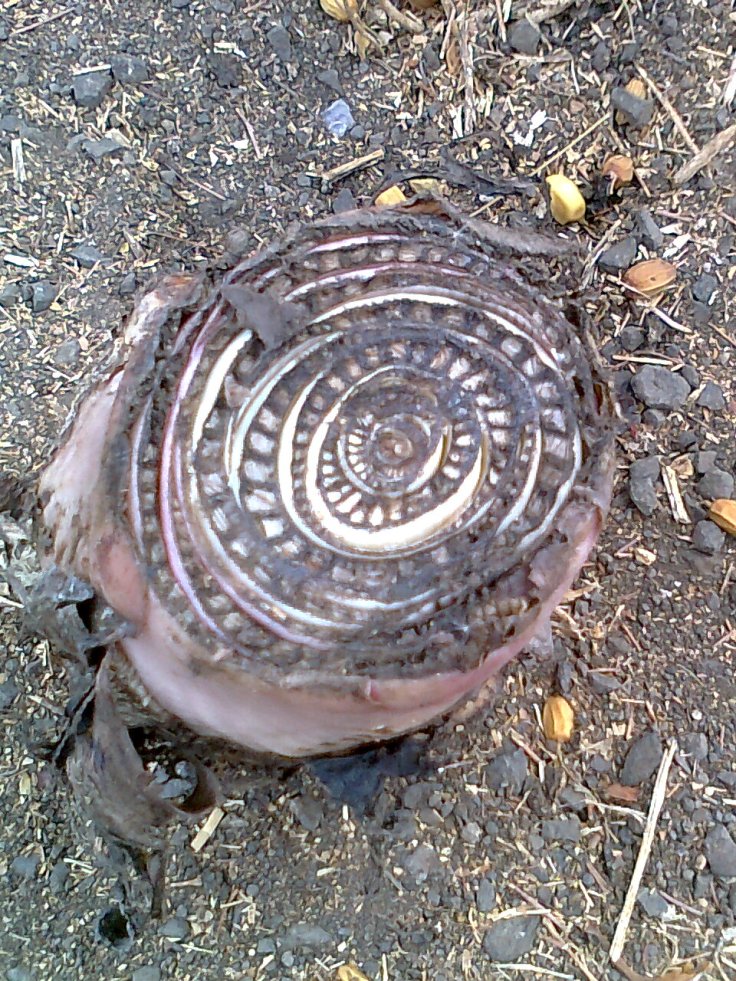
via wikimedia.org
Once you have chosen which varieties to grow, it is time to buy your banana. Although most of the nurseries do not carry bananas, they can order them for you or easily order some online. Most banana plants come as bulbs or corms, so you should be prepared for what to do once the plant arrives.
The first step is very important, and it involves washing the corm in lukewarm water to remove any fungal or bacterial growth, which may have developed during shipping. Then it is planting time!
3. Planting The Banana
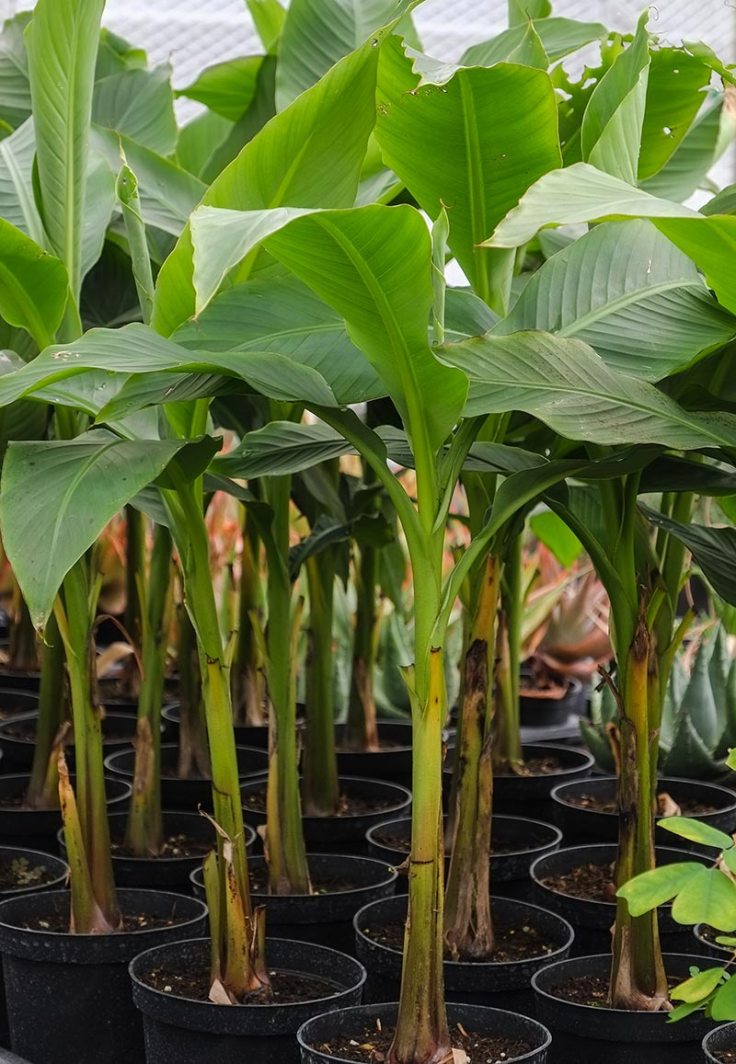
Start by choosing a standard, medium-sized container with a hole at the bottom that will allow good drainage. Now plant the rhizome upwards so the top part is uncovered and can be exposed to light. You can cover the corm with soil after few leaves appear.
When the plant becomes container bound, it is time to replant in a bigger container to ensure fruits.
4. Choosing The Right Location
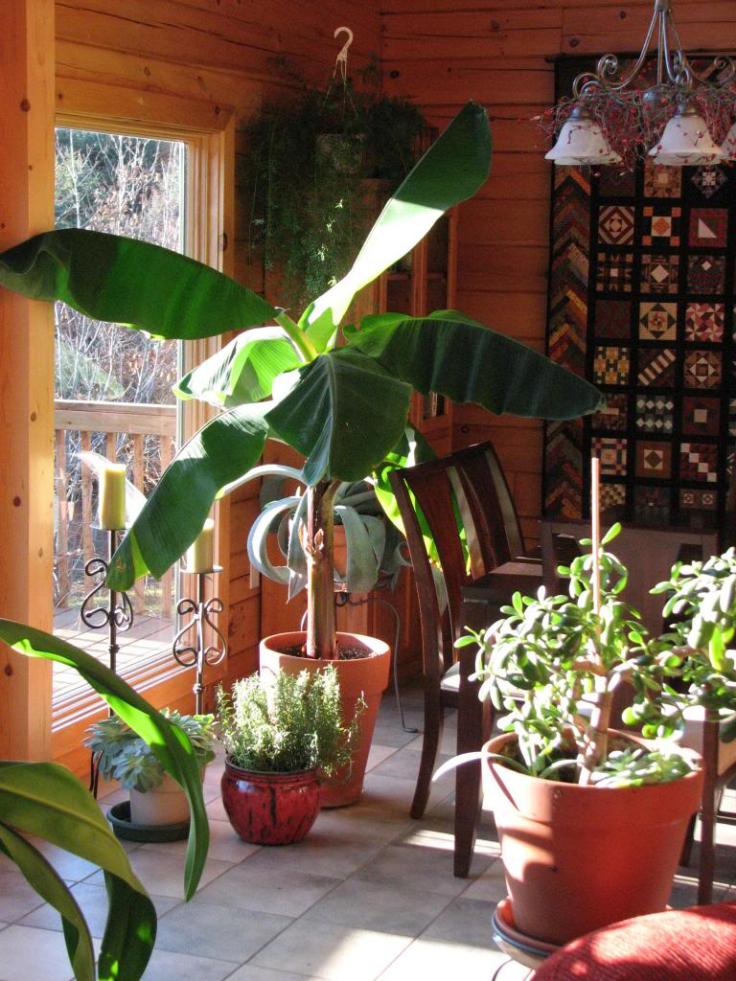
Bananas are tropical plants, so logically, they love lots of sun, heat but also humidity. Have this in mind when choosing the location for your banana tree once it is planted. Choose a spot that receives sun during most of the day but make sure it is sheltered from the wind.
5. Soil Requirements
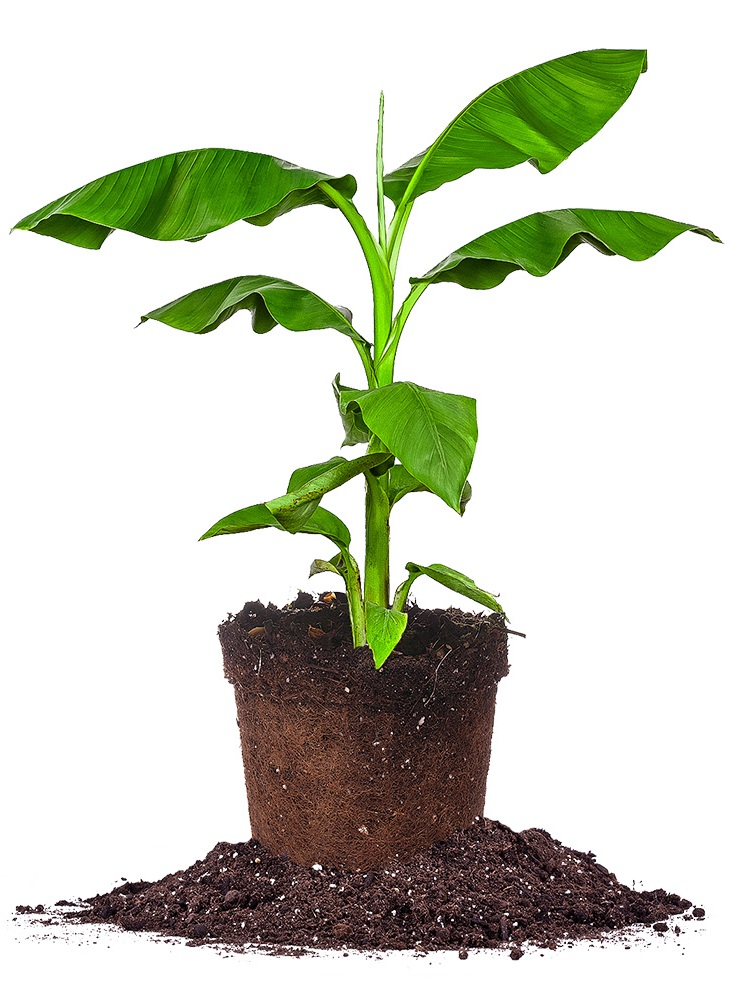
When buying the potting mix for your banana plant, go for the quality. Bananas require well-drained, sandy soil that is also rich in organic matter and compost.
You can choose to make your own potting mix; just make sure you include some sand, perlite as well as compost or manure. Bananas need soil with a pH of around 6-7. If your soil is alkaline, mix sulfur to decrease the pH.
6. Humidity
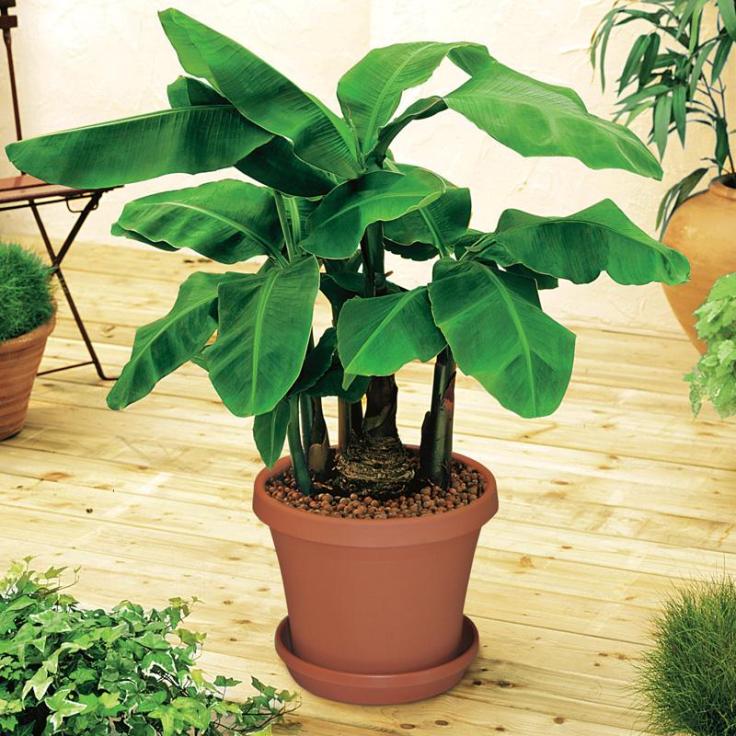
As we mentioned, bananas are tropical plants that need humidity even higher than 50%. To obtain this, it is crucial to mist your banana tree and place it on a layer of pebbles in a tray filled with water. This way, you will increase the humidity levels around the plant.
7. Watering Your Potted Banana
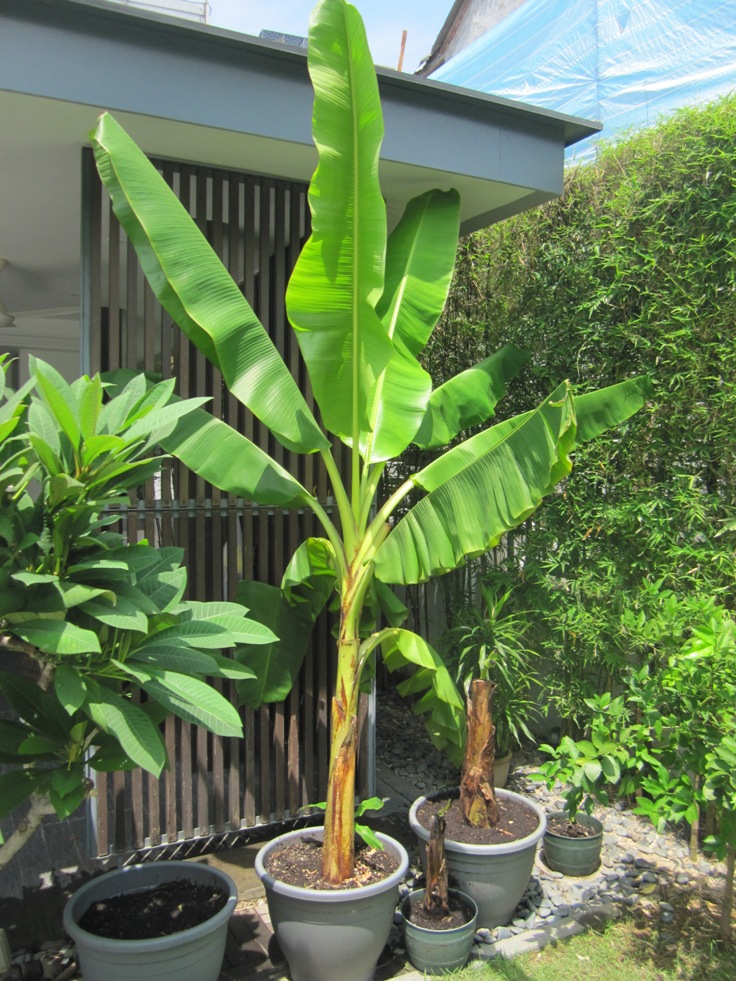
Bananas need to be watered at least once a week, but if they receive a lot of direct sunlight and the room temperature is high, they will need watering every two days.
Before each watering, check the moisture level about 1 inch below the soil’s surface; if it is dry, then it is the right time for watering. To keep better moisture, apply some mulch.
8. Fertilizing Needs
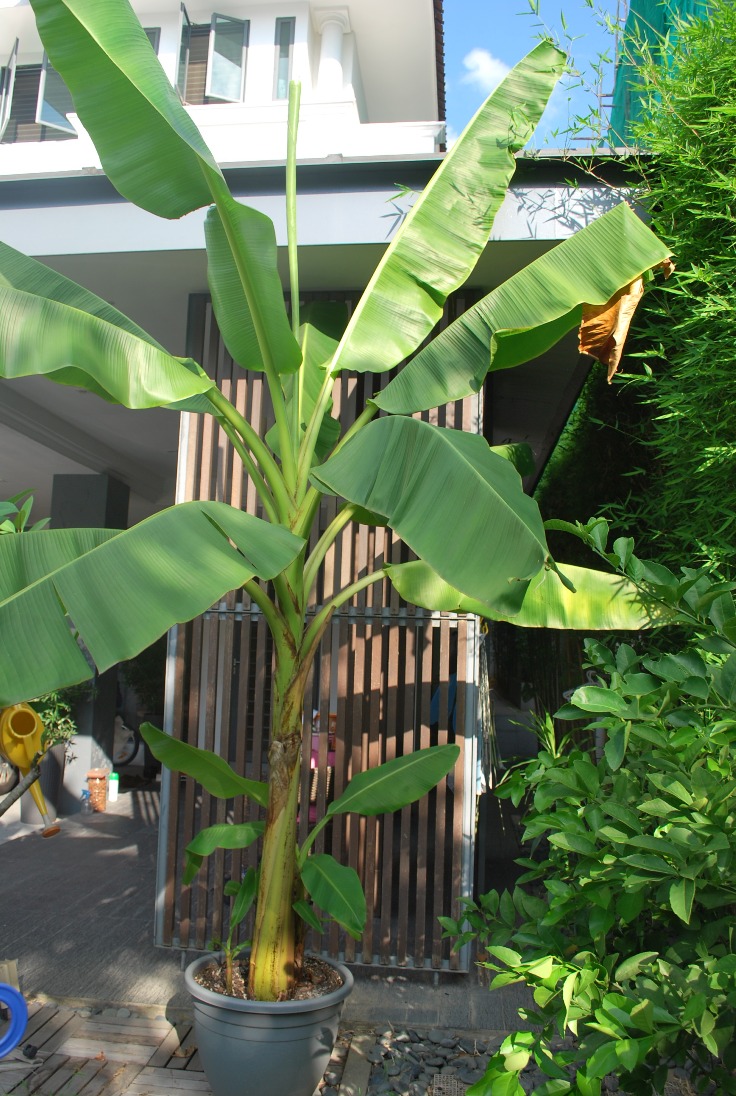
As bananas are plants that grow very fast, it is obvious that they need fertilizing to grow at their full strength.
For young plants, use nitrogen-rich fertilizer, which will help them grow faster. Once the banana plant is mature enough to produce fruits, fertilize it with 15:5:30 fertilizer regularly.
9. Diseases and Pests
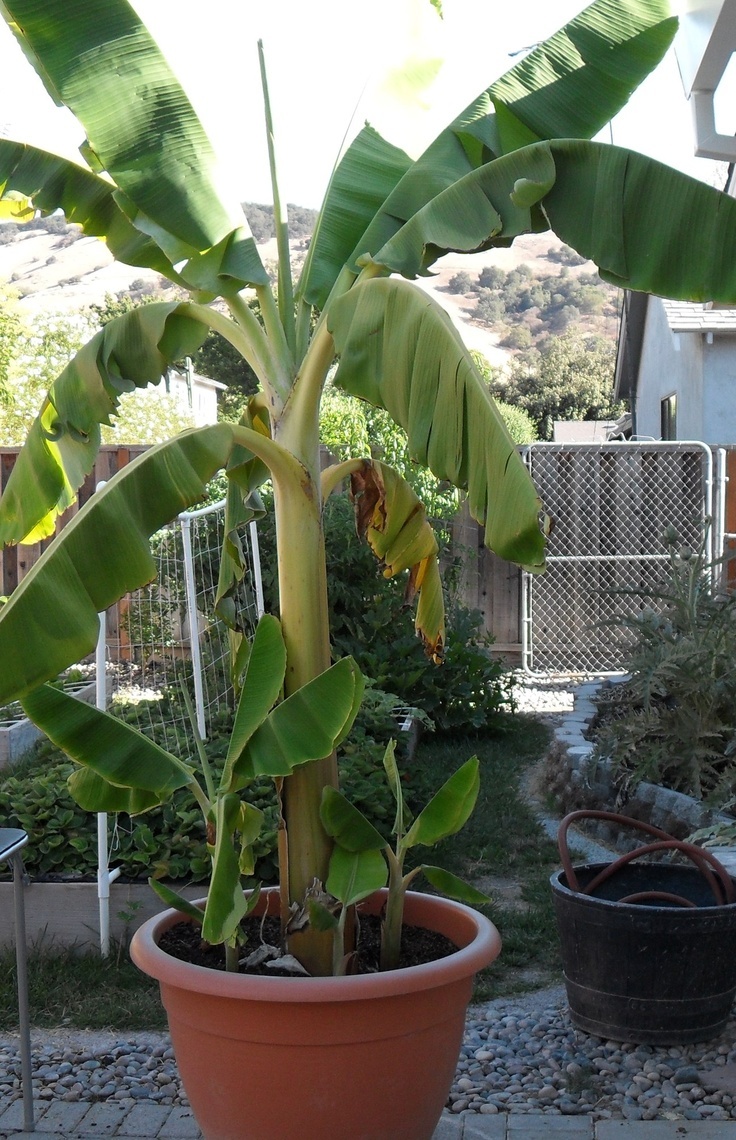
Luckily bananas are quite resistant to pests. However, some pests can attack your plant, most likely aphids, banana weevil, and coconut scale.
To fight them, use organic pesticides. If you notice that your banana tree leaves turn brown, it means you are overwatering the plant. If they turn yellow, then the banana plant is having a lack of nutrients.
10. Overwintering Banana Trees
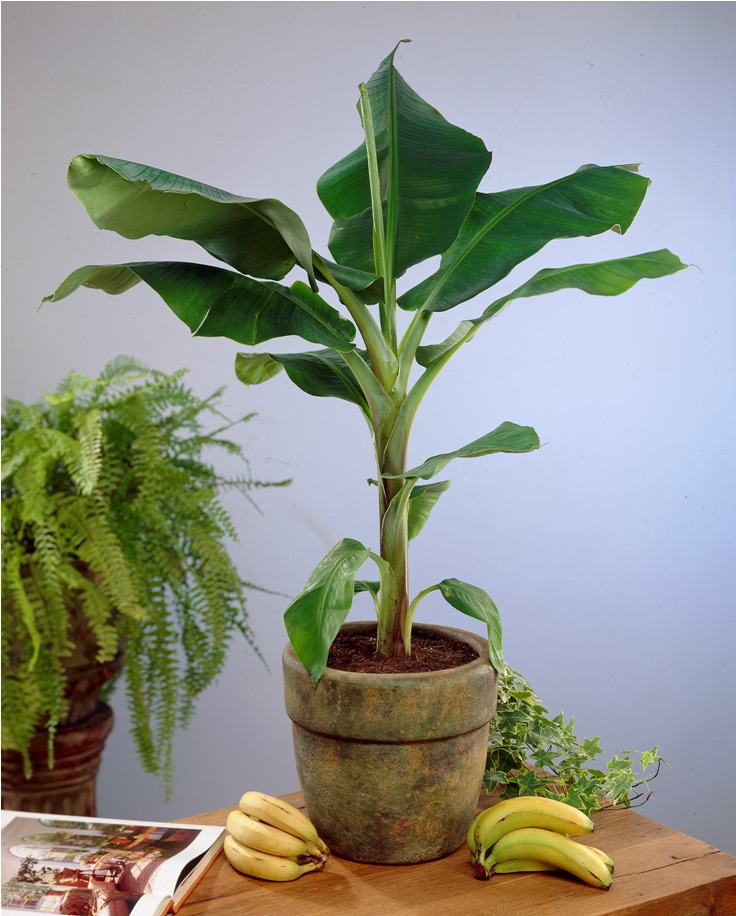
When temperatures fall under 50 ° Fahrenheit, banana trees stop growing. This is why before the winter comes, you should apply mulch heavily and prune the leaves. Once prepared, place the plant in a warm, bright room until spring.



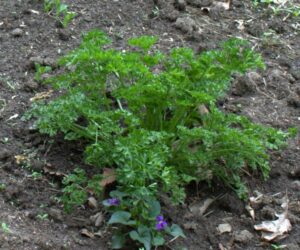
Amazing
Banana trees are like weeds; at least when growing outside
First of all: banana plants are no trees. They are herbaceous plants with pseudostems. They have specific requirements in regards of light and temperature. In a marginal climate (growing zone 8 and below), it will be extremely difficult to get them to fruit. A fruit bunch will take about 6 month to fill in and ripen properly to get edible bananas.
What mix should I put in the pot to grow the cavendish or just good quality soil
THANKS FOR THE INSPIRING ARTICLE ON MINIATURE BANANAS.
NOW WHERE CAN I BUY SOME THAT HAS A GOOD REPUTATION???
Hi Dean you can buy them on eBay and also on Etsy. Research the varieties and apply your growing season to choose which are best for you.
Thanks very much this article is very helpful
How do you get a banana plant in the first place? Thank you.
Kay you can buy them on EBay and Etsy. Research the varieties and apply your growing region to choose the right type for you.
Where can I get. Ladies finger dwarf tree in Sydney.
Did you get an answet on where to buy?
I purchased mine at Kroger this summer.
Nicole and Lorna you can buy them on EBay. Search dwarf namwah or dwarf cavendish banana plant.
Intresting article but can you give the process of how to plant the banana dwarf in the pot
A very interesting and useful article.
Dwarf banana plants are hard to get in these areas.
I live in southern ca. I have had banana trees for almlost 15 years.. and although they produce bananas they never ripen. How do you get them to turn ripe when they are almost fully grown. I can open them up and the innermost layer feels like a ripe banana would feel.. So its almost as if they are almost ripen..
Jen you know how the bananas come from the top down in what are called “hands”? You can start removing them from the main stem (don’t cut the main flower stem) when you think they’re about ready. If they need to continue to ripen, you have 3 options. Take them in and 1) Keep them together on the counter and they will ripen. Bananas release ethylene which will cause them to ripen. Just the same if you want them to stay green longer you separate the bunch. 2) You can put them in a brown paper bag together to speed #1 along. OR 3) When you bring them in sit them where they will get bright indirect light inside. Hope this helps!
Jen I live in southern California too San Diego and I don’t where to found some plants
I purchased my seed from the Wish App. They are awesome! Don’t let people’s negativity and their lack of green thumb bing you down. Try it out. Soil will not allow ANY land on this earth to produce and harvest just 1x a year. I have strawberries that are blooming 366 days a year. Indoors with natural AZ light shining into our garden/grassy cat outdoor feel with the peace of mind that my animate safer in my controlled patio room from house to backyard and pool space. Our cat loves it.
good thought
here in our site banana trees not available with nurseries so how to grow tree from banana.which part of banana we should use to get a tree
What’s the best way living in KY to bring them in , I’ve had it in the ground when should I bring it in and what should I do to it first prepping it .
Hey someone gave me a banana in a pot but the leaf or all torn and some or brown anyone know if I cut those off or leave them it looks ugly now.
Where Ican buy dwarf banana in my country Indonesia.